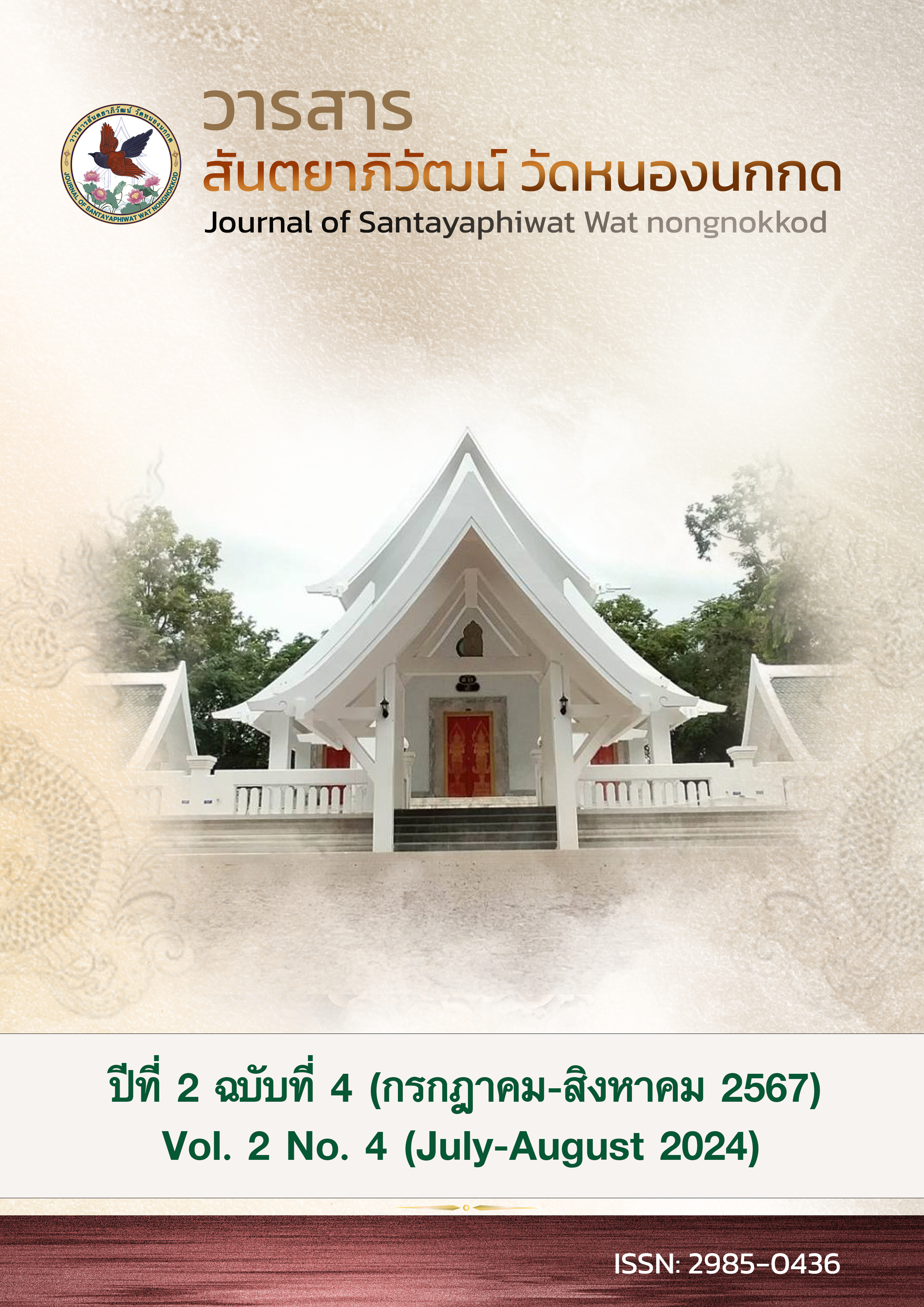CONCEPT FOR A BUDDHIST CONTEMPLATIVE DESIRABLE DEVELOPMENT SYSTEM FOR SOCIAL TEACHERS
Keywords:
Systems concept, Development of desirable characteristics, Social Teachers.Abstract
This scholarly essay proposes a systematic approach to creating desirable attributes in social studies teachers. The scope of content is specified as follows: 1) the meaning of the system; 2) the meaning of the system technique or path. 3) the arrangement of the major system and the subsystems that interact with one another 4) phases in system analysis 5) Gerlach-Ely's teaching system 5) Social Science Teacher under the existing educational system, etc. When people are able to use the concept of system theory Teaching puts students at the center of teaching and learning. By taking into account each student's learning styles and methodologies. So that teachers can plan teaching and learning to meet the needs, talents, and interests of their pupils. By constructing this instructional system according to the aim. With objectives and content (Objectives and Content), the teacher must first identify what objectives the students will attain while learning the lesson. This must be a behavioral goal that can be quantified or seen. Once the learning objectives have been established, lesson content must be chosen in conformity with those objectives. So that students can adjust their behavior to attain the desired learning outcomes.
References
กระทรวงศึกษาธิการ. (2560). แผนการศึกษาแห่งชาติ พ.ศ. 2560-2579. กรุงเทพฯ: บริษัท พริกหวานกราฟฟิค จำกัด.
กิดานันท์ มลิทอง. (2548). เทคโนโลยีทางการศึกษาและนวัตกรรม. กรุงเทพฯ: จุฬาลงกรณ์มหาวิทยาลัย.
ฉลองชัย สุรวัฒนบูรณ. (2544). การออกแบบระบบการสอน. ภาควิชาเทคโนโลยีการศึกษา คณะศึกษาศาสตร์ มหาวิทยาลัยเกษตรศาสตร์.
ฉลอง ทับศรี. (2536). เอกสารประกอบการสอนวิชาคอมพิวเตอร์กับการศึกษา. กรุงเทพฯ: ภาควิชาเทคโนโลยีทางการศึกษา คณะศึกษาศาสตร์ มหาวิทยาลัยบูรพา.
พระมหาถาวร ภูแผลงทอง. (2563). "คุณสมบัติของครูผู้สอนตามแนวพุทธธรรม". วารสารบัณฑิตศึกษาปริทรรศน์ วิทยาลัยสงฆ์นครสวรรค์, 8 (1), 275.
ประจักษ์ เฉิดโฉม. (2537). การวิเคราะห์ระบบ. กรุงเทพฯ: สยามสปอร์ต ซีนติเคท.
ประหยัด จิระวรพงษ์, (2540). หลักการและทฤษฎีเทคโนโลยีทางการศึกษา. พิษณุโลก: คณะศึกษาศาสตร์ มหาวิทยาลัยศรีนครินทรวิโรฒ.
ชัยยงค์ พรหมวงศ์. (2545). การวางแผนการสอนและเขียนแผนการสอน. ในเอกสารการสอนชุดวิชา
วิทยาการการสอนหน่วยที่ 8-15. (พิมพ์ครั้งที่ 7). นนทบุรี: มหาวิทยาลัยสุโขทัยธรรมาธิราช.
สงัด อุทรานันท์. (2540). เทคนิคการจัดการเรียนการสอนอย่างเป็นระบบ. (พิมพ์ครั้งที่ 6). กรุงเทพ ฯ: มิตรสยาม.
Gagne, R., Briggs, L, and Wager, W. (1992). Principles of Instructional Design. New York: Holt,Rinehart, and Winston.
Heinich R.,Molenda M. and Russell, James D. (1989). Instructional Media and the New Technologies of Instruction. New York: Macmillan Publishing Company.
Kaufman, R., Rojas, A.M., & Mayer, H. (1993). Needs assessment: A user’s guide. Englewood Cliffs, NJ: Educational Technology Publications.
Robbins and Coulter. (2007). Organization Theory: Structure, Design, and Applications. New Jersey:Prentice-Hall.








